For the first time in four years, approximately 300 users, staff, and other members of the scientific community gathered in person at Berkeley Lab for the 2023 ALS User Meeting, September 11–15. This year’s event, which also had a virtual attendance option, was co-chaired by Users’ Executive Committee (UEC) members Yu He, Wendy Gu, and Devin Grabner and co-organized by the broader UEC alongside the ALS User Office and administrative staff. With a new ALS director in place, the 30th anniversary of first light a month away, and ALS Upgrade (ALS-U) construction well underway, the occasion was primed to discuss the long-term future of the facility.
The first day of the meeting was devoted to four parallel tutorials. The ever-popular Light Sources 101 tutorial was back for the sixth year in a row, once again organized by the UEC. Members of the ALS Computing Program offered a hands-on Python tutorial for machine learning, and the team at the Structurally Integrated BiologY for Life Sciences (SIBYLS) Beamline organized a bioSAXS tutorial. Additionally, a group of ALS scientists and users provided a tutorial on data acquisition and analysis for x-ray scattering.
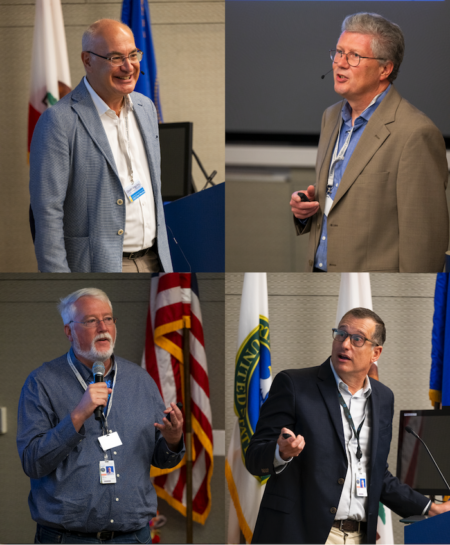
Tuesday featured plenary talks, along with the poster slam and session, awards ceremony, and evening reception. UEC Chair Inna Vishik opened the plenary session, and Energy Sciences Associate Laboratory Director Jeff Neaton welcomed participants. A combined talk followed on ALS and ALS-U progress and prospects, from ALS Director Dimitri Argyriou, Science Deputy Andreas Scholl, ALS-U Project Director Dave Robin, and ALS Photon Science Operations Group Lead Mike Martin. Scholl covered recent ALS updates, including science and instrumentation highlights and staff recognition. Robin gave an overview of ALS-U progress over the last year, most notably the installation of the first accumulator ring magnet rafts over the summer. He also announced two important recent decisions that were necessary to ensure the project would be successful: a nine-month shift in the start of the one-year dark time, from October 1, 2025, to June 22, 2026, and the removal of two of the four feature beamlines, FLEXON and Tender, from the project scope. Martin followed, explaining what ALS-U will do for beamline science and giving an overview of beamline impacts and user proposal expectations.
Argyriou’s portion of the talk presented a vision for “ALS 2.0,” a facility that exploits the new capabilities offered by ALS-U, actively supports its users and partners, deploys modern instrument and data technologies, and has a balanced portfolio of unique capability, capacity, and commodity beamlines. He urged the user community to be part of defining the future of the facility, including engaging in crafting the scientific vision and partnering with the ALS on new opportunities.

A talk from Dava Keavney, DOE program manager for x-ray and neutron scattering facilities, followed. She gave an update on Basic Energy Sciences funding initiatives and an overview of the federal appropriations process, highlighting alongside it the importance of science communication. The morning presentations concluded with a talk from the 2023 Shirley Award recipient, Will Chueh of Stanford University, who was recognized for his “deep contributions to operando soft x-ray spectromicroscopy for imaging electrochemical redox phenomena.” His presentation covered, among other things, his synchrotron characterization work on lithium-iron-phosphate electrode materials, and future opportunities he sees with the higher resolution and data rates possible with the upgraded ALS and how artificial intelligence (AI) may play a role.

The annual poster slam—one component of the student poster competition—rounded out the morning session. It was once again emceed by Staff Scientist Dula Parkinson and featured 13 undergraduate and graduate student contestants. Before the main event, three warm-up acts took the stage: the second annual “poetry slam,” this year featuring synchrotron-related haikus, a mini-quiz show with Parkinson probing Argyriou’s expertise on such topics as “light source or lightning strike?”, and a rendition of Amos Lee’s “Little Light” set to synchrotron lyrics performed by Senior Administrator Andrea Taylor.
The poster slam itself included expertly delivered scientific short talks, some with creative spins such as a unicorn analogy with matching headgear by Isaac Zakaria (UC Berkeley) and a “murder mystery” about how a uniaxial strain field “killed” an iron-based material’s superconductivity as told by Yucheng Guo (Rice University). The poster session followed after lunch, with both student competition and general participants. First prize was awarded to Aleksandr Razumtcev (Purdue University) for “Broadband Chemical Imaging by Synchrotron Photothermal Microscopy.” Second prize went to Zakaria, third place to Andrew Lee (Stanford University), and Alaina Hartnett (Harvard University) was selected as a runner up.
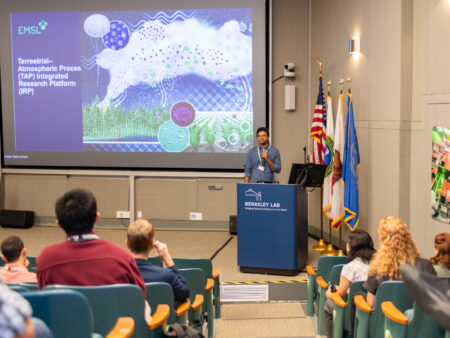
Four scientific keynote talks rounded out the afternoon. Emiley A. Eloe-Fadrosh, from the DOE Joint Genome Institute, spoke on metagenome sequencing technologies for cataloging microbial diversity and functional capacity, and Sarah Tolbert of UCLA highlighted her synchrotron work on nanostructured batteries for high-rate and high-capacity energy storage. Swarup China from Pacific Northwest National Laboratory showcased work characterizing atmospheric particles with multimodal chemical imaging, and Su-Yang Xu of Harvard University spoke on topological materials—specifically, on helicity-dependent optical control of antiferromagnetic order.
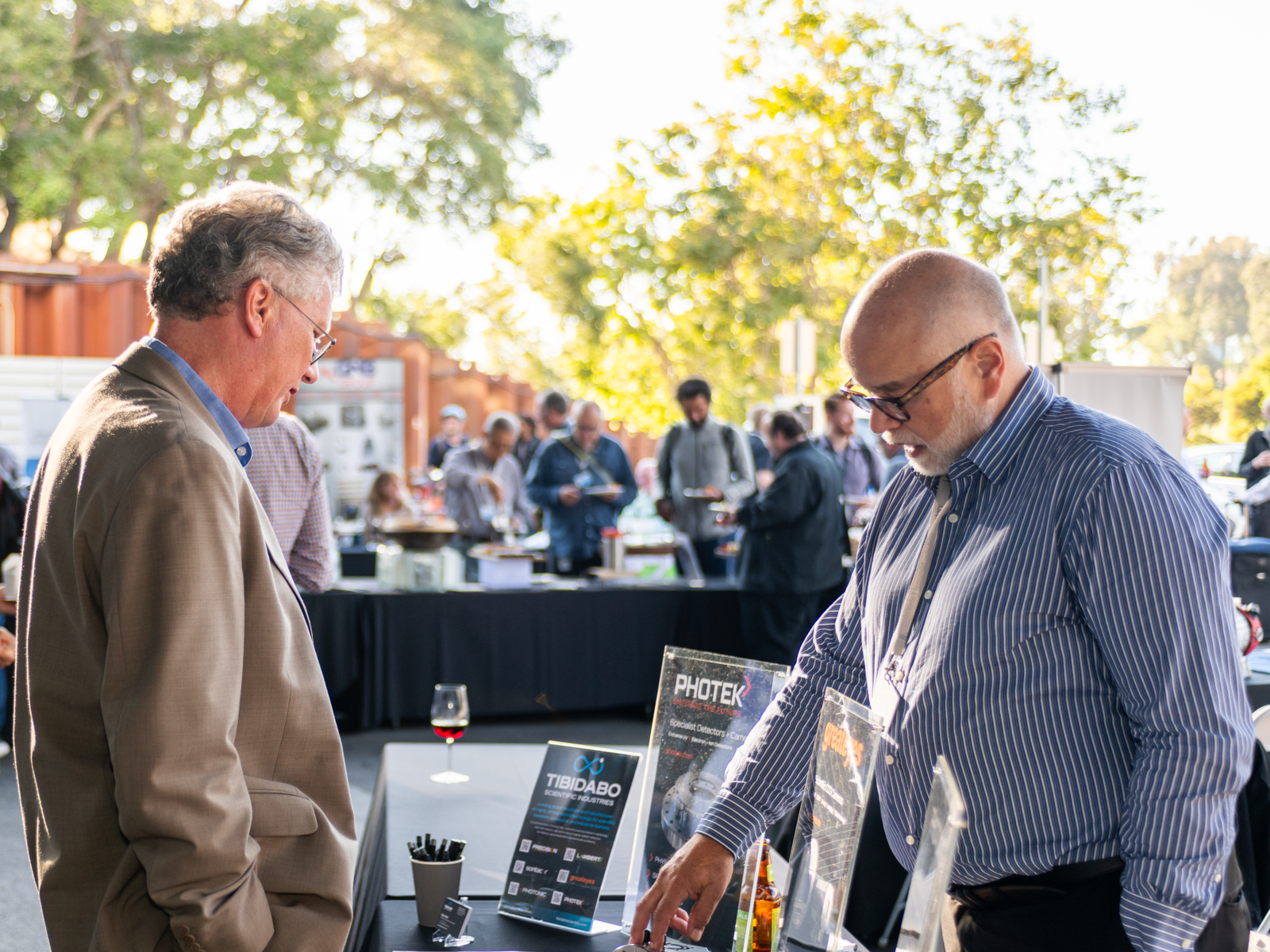
The evening reception, co-sponsored by AVS US, Inprentus, and Scienta Omicron, was kicked off by Vishik. The awards presentation followed, where Chueh and the student poster competition winners were presented their certificates. In addition, ALS Writer-Editor Lori Tamura was recognized by the UEC as the recipient of the Renner Award “for her exceptional work communicating the scientific achievements conducted at the ALS to the general public through her writing,” and ALS Staff Scientist Slavomir Nemsak was announced as the Halbach Award winner “for the development of the state-of-the-art combined scattering and spectroscopy setup at ALS Beamline 11.0.2.” The remainder of the evening offered the chance for meeting attendees to interact with the 20 on-site exhibitors and connect with one another.
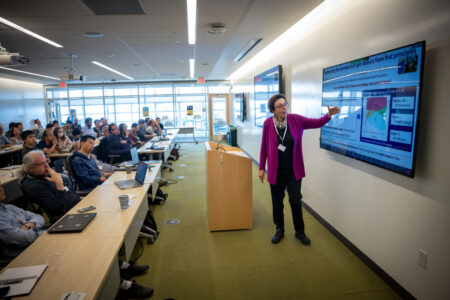
The second half of the User Meeting was devoted to science visioning workshops, a key part of an ongoing ALS strategic planning process to define the evolution of the ALS science portfolio into the 2030s. Four parallel workshops—on biosciences, condensed matter and quantum materials, earth and environmental sciences, and energy sciences—were co-organized by ALS staff and users. Participants were charged to identify key scientific challenges and prioritize long-term research opportunities that the ALS could evolve to address 10 years from today. They were also asked to describe key enabling synchrotron capabilities needed to realize these opportunities as well as partnerships and collaboration modalities that would have the most potential for impact.
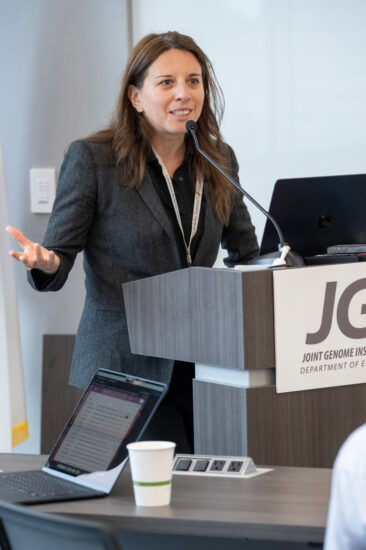
Wednesday morning’s workshop plenary session began with Argyriou urging participants, who included invited scientists, staff, and other User Meeting attendees, to think of paradigm shifts in science and what would be needed 10 years in the future to realize them. ALS Deputy for Strategy Ashley White outlined the goals of the strategic planning process and how input from the workshops will feed into it, and Scholl highlighted ways in which the upgrade currently in progress will offer opportunities across scientific fields. A series of lightning talks followed, with White sharing the Berkeley Lab vision for a new materials and chemistry campus on the Charter Hill site, adjacent to the ALS, including a facility dubbed the “Chemical Observatory” that would deliver x-rays from extended ALS beamlines in combination with laser beams, electrons, and other probes on demand simultaneously to experimental stations in a large, fully functioning, open laboratory space. ALS Senior Staff Scientist and Computing Program Lead Alex Hexemer then gave a talk on prospects for artificial intelligence and machine learning (AI/ML), covering such topics as autonomous data collection, digital twins, and physics-informed AI/ML. Finally, ALS Senior Staff Scientist and ARPES Program Lead Eli Rotenberg presented a vision for the Lab of the Future, in which processes, materials, and mechanisms are studied with multiple synthesis, theoretical, and hyperdimensional analysis tools, aided by automation and autonomy with an explicit component of knowledge sharing.

Approximately 200 on-site participants then dispersed to their individual workshop locations for two days of talks and discussions, followed by report-outs on the last morning of the meeting. The scientific topics were wide ranging, but common themes emerged, including the power of multimodal characterization, the integration of automation and AI/ML, and the role coherence-based experiments will play in the future. In addition, some workshops offered suggestions for new partnership directions and access modes that would enhance the science. Outcomes of the workshops will be assembled in a public science vision document and will inform a new ALS strategic and tactical plan, towards the realization of Argyriou’s “ALS 2.0” vision.
All photos from the User Meeting can be viewed and downloaded here.